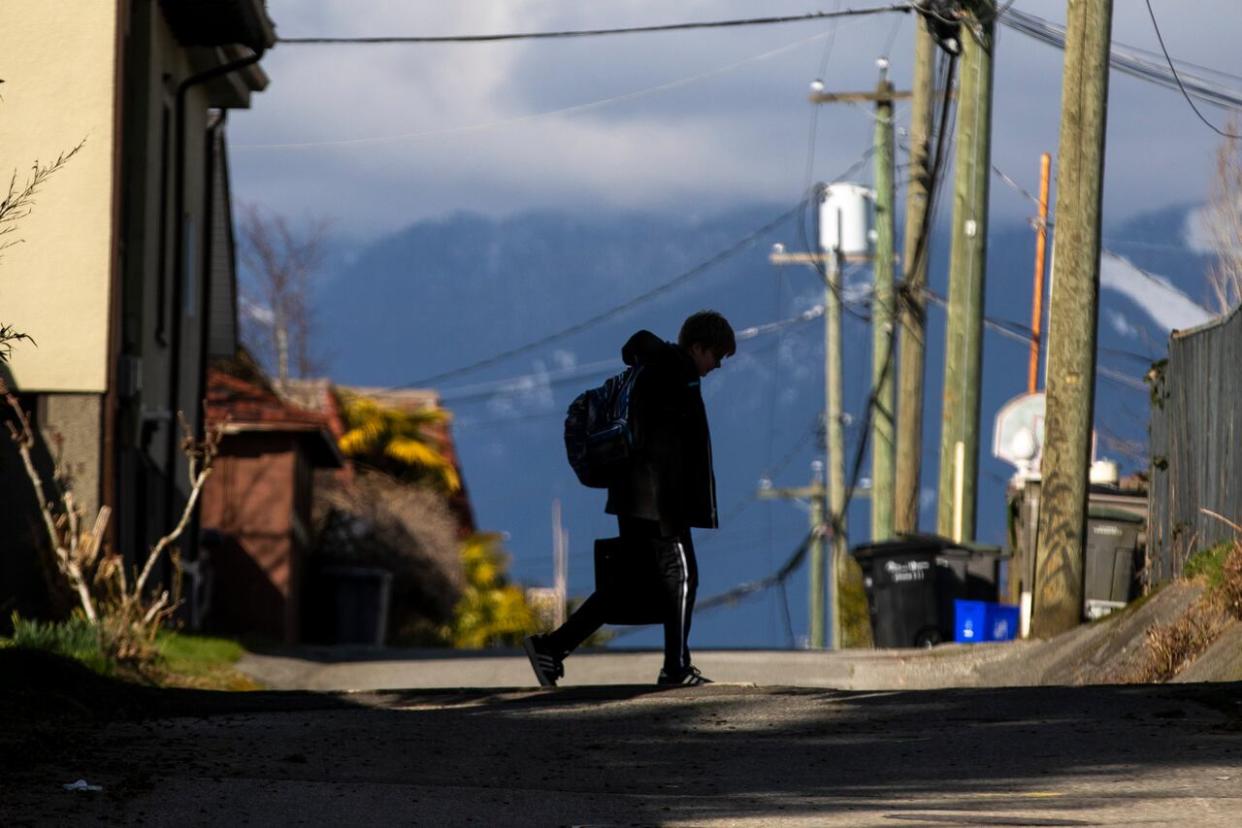B.C.'s child poverty rate trending upwards, report says

A recent report from a child advocacy group says more than 126,000 children in British Columbia were living in poverty in 2021 despite decades of policy changes, with some of the worst situations in single-parent families and on First Nation reserves.
The B.C. Child Poverty Report Card from the First Call Child and Youth Advocacy Society shows a slight rise in the child poverty rate following a sharp decline in the previous year.
In 2020, for the first time in 20 years, B.C. had a lower child poverty rate (13.3 per cent) than the national average (13.5).
Adrienne Montani, the society's executive director, largely credits COVID-19 pandemic financial benefits — the Canada Emergency Response Benefit (CERB) — for lifting many families above the poverty line that particular year.
"[Child poverty] is starting to trend up again," Montani said Monday on CBC's BC Today.
Although pandemic benefits were reduced in 2021, they continued to have a significant impact on child poverty rates across the country, she said.

According to the report, immigrant children in B.C. are at higher risk of poverty, with more than one in five living in poverty in 2020. (Ben Nelms/CBC)
"We know what works to reduce child poverty ... and government transfers to family income makes the biggest difference."
Without any government transfers, the child poverty rate in B.C. would have been 29.6 per cent in 2021, the report claims.
The report also makes more than two dozen recommendations, nine of them focused on raising family incomes through paying family-supporting wages or improving income supports.
Lorraine Copas of the Social Planning and Research Council of B.C. said in a news release that governments should build on the lessons of the dramatic drop in poverty rates when families were getting pandemic support.
"By enhancing policy tools already in place, such as federal and provincial child benefits for families, we can stop the return of higher child poverty rates and work toward eliminating child poverty in Canada as promised so long ago."
The province's 2024 budget introduced the B.C. Family Benefit Bonus, a temporary bonus for the 2024/25 benefit year that will result in a 25 per cent increase to annual B.C. Family Benefit amounts.
But Montani says that's not going to be enough.
"It's only for one year ... making it a permanent increase is what we really need," she said.
Poverty risk higher for some groups
While the province's child poverty rate for 2021 was lower than the national average of 15.6 per cent, the rate on 67 First Nations reserves is about double the national rate, while for single-parent families it's even higher at 40 per cent.
Montani says there's also a growing disparity, with the highest-income families making 25 times what those in the lowest income bracket make.
One of the first recommendations the report makes is to increase the province's hourly minimum wage rate.

The overall child poverty rate on 67 B.C. First Nations reserves in 2021 was 31 per cent, more than twice as high as the overall B.C. child poverty rate. (2023 B.C. Child Poverty Report Card)
B.C.'s lowest-paid workers will get a pay raise on June 1 when the minimum wage increases from $16.75 to $17.40 per hour.
The children's advocacy group recommends the province increases it to at least $20 per hour by 2026.
B.C.'s poverty position has improved in recent years, according to the report, with the third lowest child poverty rate among the 13 provinces and territories, though there is still a need for renewed commitment and urgency to reduce poverty.
It says overall poverty statistics also hide the fact that some children in B.C. are at greater risk of living in poverty.
"According to the 2021 census data, child poverty rates for selected visible minority (racialized) groups were higher than the non-racialized child poverty rate of 9.8 per cent in B.C.," the report says.
"Arab, Korean, and West Asian children had more than double or triple the risk of poverty compared to non-racialized children, followed by Chinese and Latin American children."
Immigrant children in B.C. were also at a higher risk of poverty, with more than one in five living in poverty in 2020, it says.

 Yahoo News
Yahoo News 
